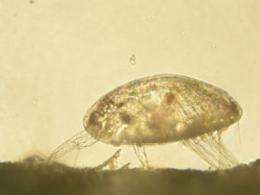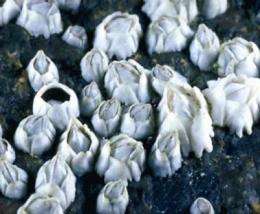New paints prevent fouling of ships' hulls

The colonisation of hulls by algae, barnacles, mussels and other organisms is a major problem for both pleasure boats and merchant tonnage. In a joint project, researchers at the University of Gothenburg and Chalmers University of Technology, Sweden, have developed new environmentally-friendly and effective bottom paints to prevent this.
Fouling is a major problem, leading to higher fuel consumption and so increased air pollution. It can also cause the spread of alien species that do not belong in the local marine environment.
Effective biocides found
Researchers at the University of Gothenburg and Chalmers University of Technology have spent nine years developing new environmentally-friendly and effective antifouling paints through a joint research programme called Marine Paint.
The focus has been on a substance called medetomidine, which has proved highly effective against barnacles, considered to be the most problematic fouling organism.
To tackle other types of fouling as well (such as algae, mussels, sea squirts and moss animals), the researchers have developed a concept for producing optimised combinations of different antifouling agents, or biocides.

The idea behind these optimised blends is to combine many different biocides that are effective against different fouling organisms, and adjust the balance between them to eliminate all types of fouling.
To produce the recipes for these optimised blends, the researchers have also developed a model system where they weigh the effect of different biocides on different fouling organisms against their expected environmental risk. The blends are all equally effective but offer different levels of expected environmental risk.
Hi-tech paints
These optimised blends have been combined with hi-tech paint systems based on microcapsules – microscopic capsules made out of a polymer material which slowly release the biocides from the paint into the water.
Field trials of painted test panels at the Sven Lovén Centre for Marine Sciences in Kristineberg have shown that the concept of optimised antifouling blends in bottom paints works very well.
Marine Paint's research results for medetomidine have been passed to the commercial partner I-Tech AB to ensure that they are put into practice, and the product is now being marketed under the name Selektope.
Provided by University of Gothenburg



















